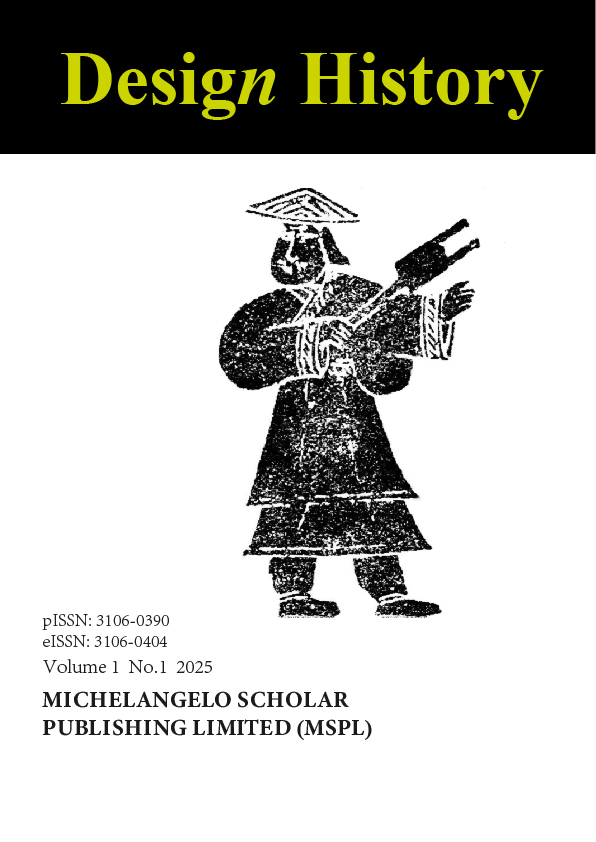The Global Reach of Design History
Design History (DH) will has expand its geographical and cultural scope significantly in the future, recognizing that design practices and histories exist in diverse forms worldwide. This inclusive approach enriches the discipline by incorporating previously underrepresented perspectives and methodologies.
Beyond Western Narratives
The journal actively challenges Eurocentric perspectives by publishing research on design traditions from Africa, Asia, Latin America, and indigenous communities worldwide. This approach acknowledges that design history encompasses far more than the familiar Western canon.
Scholarly contributions have documented distinctive material cultures from regions such as West Africa's textile traditions, Japanese craft-design movements, Latin American modernism, and Aboriginal Australian visual systems. These studies demonstrate how local materials, techniques, spiritual beliefs, and social structures have produced rich design languages with their own internal logics and aesthetic principles.
Cross-Cultural Exchange
Articles frequently examine how design ideas travel across borders, adapting to local contexts while creating new hybrid forms. These studies reveal the complex networks of influence that have shaped design practices globally throughout history.
Research has explored phenomena such as the adaptation of European modernism in postcolonial nations, the influence of Japanese aesthetics on Western design movements, and the circulation of craft techniques along historical trade routes. Such scholarship reveals that design innovation often emerges at cultural intersections, challenging notions of cultural purity or unidirectional influence from centers to peripheries.
Decolonizing Design History
Recent scholarship published in the journal critically examines colonial legacies in design education and practice. This work highlights how power structures have privileged certain design narratives while marginalizing others.
Articles have analyzed how design museums categorize non-Western artifacts, interrogated the epistemological foundations of design education globally, and documented indigenous design knowledge systems that operate outside Western paradigms. This critical perspective helps reframe design history as a discipline that must acknowledge its own institutional biases and work toward more equitable representations of global creative practices.
Multilingual Research
While published in English, the journal welcomes research drawing on primary sources in multiple languages, ensuring scholarly access to design histories documented in non-English archives and collections.
This linguistic inclusivity has enabled groundbreaking research on topics such as Arabic typographic history, Chinese design periodicals, Brazilian manifestos, and Russian constructivism, all based on original language materials. The journal provides translation support and encourages methodological discussions about working across language barriers, recognizing that key design concepts may have different semantic fields in different linguistic traditions.
Through this global approach, the Journal will be an important platform for international scholarly dialogue, helping to redefine the boundaries of design history as a discipline. The journal continues to seek new perspectives that expand our understanding of design as a fundamental human activity practiced in diverse cultural contexts throughout history.
Global Perspective: Design Across Cultures
The Design History journal actively cultivates scholarship that transcends geographical and cultural boundaries, recognizing design as a global phenomenon with diverse local expressions. By featuring research from scholars worldwide, DH creates a platform for cross-cultural dialogue and comparative analysis.
This international approach deliberately balances Eastern and Western design traditions, challenging Eurocentric narratives that have historically dominated design history. The journal seeks contributions that explore indigenous design practices, post-colonial perspectives, and cultural hybridization.
Through its global lens, DH examines how design ideas, techniques, and aesthetics migrate across borders, transform through cultural adaptation, and respond to local contexts while participating in global conversations.
Mission and Vision: Advancing Design Discourse
Critical Research
DH fosters scholarly investigation that challenges conventional narratives and explores design history through diverse theoretical frameworks, encouraging new perspectives and methodologies. Our peer-reviewed articles apply rigorous analytical approaches from fields including anthropology, sociology, philosophy, and material culture studies to deepen understanding of design's complex historical dimensions.
Cultural Context
The journal examines design as both reflection and driver of cultural change, analyzing how objects, spaces, and visual communications embody and influence societal values. We explore the interconnections between design artifacts and their socio-political environments, considering issues of power, identity, consumption, and representation across diverse global contexts and marginalized communities.
Historical Continuity
By connecting historical precedents to contemporary practice, DH creates meaningful dialogues across time periods, illuminating design's evolving role in human experience. Our scholarship traces the lineage of design movements, technological developments, and methodological approaches to provide critical context for current practitioners and educators while establishing foundations for future innovation in the field.
The Design History journal embraces an interdisciplinary approach that transcends traditional boundaries between design specializations. Our editorial board comprises distinguished scholars from around the world who bring diverse expertise in areas including graphic design, industrial design, fashion, architecture, digital media, and craft traditions. This multifaceted perspective enables a comprehensive examination of design phenomena across cultures, time periods, and media.
Through special themed issues, conference proceedings, and open access initiatives, DH actively works to democratize access to design scholarship and foster global conversations about design's historical significance and future trajectories. The journal serves as both an academic resource and a catalyst for innovative thinking in design education, museum practice, and professional design fields.
Design History
About Design History
ISSN: 3106-0390(Print), 3106-0404(Online)
Frequency: Semi-annual
Design History (DH) is an international scholarly journal published by MSPL. DH implements a peer-reviewed, open-access policy for original articles and publishes four times a year (quarterly) in both print and online formats. All articles in DH are under the Creative Commons Attribution License (CC BY-NC-ND, version 4.0). Copyright for each article belongs to its author(s) and is published by Michelangelo-scholar Publishing Ltd.
Design History (DH) is a scholarly platform dedicated to exploring the diverse realms of design history, theory, and culture. DH promotes innovative design concepts and historical scholarship, analyzing the evolution of design and consumer culture while fostering cross-cultural dialogue, with a particular focus on design’s profound impact on everyday life. DH advances the forefront of design history, aiming to shape global research trends. We warmly invite interdisciplinary scholars to submit papers, igniting fresh perspectives in design history and theory.
Bridging Design, Service, and Social Change
JDSSI is to serve as a premier platform for disseminating cutting-edge research that integrates design thinking, service learning, and social innovation. We are committed to fostering a community of scholars, practitioners, and policymakers dedicated to addressing complex social challenges through collaborative, human-centered approaches.
By providing a space for interdisciplinary dialogue and knowledge exchange, JDSSI seeks to inspire transformative solutions that promote equity, sustainability, and well-being for all. Our goal is to catalyze positive social impact by amplifying the voices of those working at the intersection of design, service, and social change.
Fostering Collaboration
Connecting researchers, practitioners, and policymakers to address social challenges.
Promoting Innovation
Showcasing cutting-edge research in design, service, and social innovation.
Driving Impact
Inspiring transformative solutions for equity, sustainability, and well-being.
Understanding the Interdisciplinary Nature of JDSSI
JDSSI embraces the interdisciplinary nature of design service and social innovation, recognizing that effective solutions often emerge from the convergence of diverse perspectives and expertise. Our journal welcomes contributions from various fields, including design, sociology, education, public health, engineering, and business, to foster a holistic understanding of social challenges and opportunities.
By encouraging cross-disciplinary collaboration and knowledge sharing, JDSSI aims to break down silos and promote innovative approaches that integrate insights from multiple disciplines. This interdisciplinary focus enables us to address complex social issues in a comprehensive and nuanced manner, leading to more sustainable and impactful outcomes.





